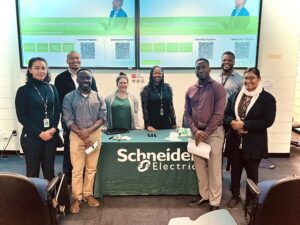In this blog post I plan to take a look at the FDA 21 CFR Part 11 Regulations (what is it?, term definitions, why do we need it?), and resources available to comply with these requirements using the Wonderware Software.
What is 21 CFR Part 11?
The 21 CFR Part 11 regulations from the Food and Drug Administration (FDA) sets forth the criteria under which the agency considers electronic records and electronic signatures to be trustworthy, reliable, and generally equivalent to paper records and handwritten signatures executed on paper.
Glossary
Electronic Record: Any blend of content: text, graphics, data, audio, or pictorial information represented in digital form that is created, modified, maintained, archived, retrieved or distributed by a computer.
Electronic Signature: A gathering of any symbol(s) executed to be the lawfully tying likeness an individual’s manually written mark executed to be the legally binding equivalent of an individual’s handwritten signature.
Handwritten Signature: The scripted name or legitimate characteristic of an individual written by hand by that individual and executed or embraced with the present aim to verify a writing in a permanent form.
Digital Signature: An electronic mark based upon cryptographic techniques for originator verification, figured by utilizing an arrangement of standards and an arrangement of parameters such that the character of the underwriter and the respectability of the information can be verified.
(Source: The Beginners Guide to 21 CFR Part 11)
Why do we need it?
By introducing the 21 CFR Part 11 control, the FDA have basically empowered the FDA directed industries to streamline business forms, diminish turnaround time and costs, all by building up standard criteria for the utilization of electronic records and signatures. Witout this rule, we would be unable to manage records and other content electronically, significantly increasing the risk of human errors, increasing operational costs and increasing time-to-market for products.
What you need to think about if you are tasked with complying with 21 CFR Part 11
According to Montrium, there are three main areas in which FDA-regulated organizations must look at as primary areas of focus when working to comply with the 21 CFR Part 11:
Features of Your Software System – In accordance with 21 CFR Part 11 there is a range of characteristics that you are required to have in place when implementing a software application to manage electronic records and processes. For example: Audit trail functionality, electronic signatures, security and data integrity, records retention and file formats are to name but a few.
Standard Operating Procedures – As with all regulated industries, the companies that operate within them use Standard Operating Procedures (SOP’s) to govern and describe how they are to do things.
System Validation – When implementing an electronic system for the use in regulated activities, you have to ensure that you document that the electronic system is fit for its intended use. In other words, demonstrate that your system does what it should do. You must also have controls in place that allow you to identify when the system doesn’t function as per its intended use. Here you should be utilizing your SOP’s and industry best practices (such as the Wonderware System Platform 2014 R2 with InTouch 2014 R2 21 CFR Part 11 Deployment Guide) to facilitate the validation process.
Resources available from Schneider Electric Software to comply with the 21 CFR Part 11
Schneider Electric Software prides itself on helping customers reduce the cost and time of application development. In going a step further, Schneider Electric Software provides customers from Food and Drug Administration (FDA) audited industries with a set of best practices in regards to the 21 CFR Part 11 requirements.
This 21 CFR Part 11 Deployment Guide for Wonderware System Platform™ 2014 R2 with InTouch 2014 R2 offers information on Wonderware System Platform, InTouch, and Wonderware Historian features relevant to the 21 CFR Part 11 requirements of the U.S. Food and Drug Administration (FDA).
While not directly subject to regulation under 21 CFR Part 11, Wonderware System Platform, InTouch, and Wonderware Historian products incorporate features and functionality designed to facilitate the development of applications for use in FDA-regulated industries. Accordingly, Schneider Electric Software has made available this document to provide customers with a set of “best practices” in regards to certain Wonderware products and the 21 CFR Part 11 requirements.
Best practices suggested in this deployment guide, in conjunction with properly designed and implemented external procedural controls, should reduce the cost of development, validation, and re-qualification of applications.
Wonderware System Platform, InTouch, Historian, and procedural controls can be used to implement systems that comply with the FDA’s 21 CFR Part 11 regulation.
Related resources
InTouch Machine Edition FDA 21 CFR Part 11 Features
Reference:
The Beginners Guide to 21 CFR Part 11 – Montrium. N.p., n.d. Web. 26 Dec. 2015 https://blog.montrium.com/blog/the-beginners-guide-to-21-cfr-part-11




Conversation
Another very well written Schneider Blog. A solid company everywhere with high levels of best practice. We see it here in Australia also! This is a good demonstration of achieving best practice and such methods could integrate well with FSSC certification and food safety management. We work with a similar mentality here at JLB and although the regs are different here than in the USA, the same principals apply. Thanks for sharing.